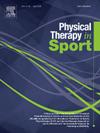单腿深蹲时腰骨盆稳定性训练项目对腰背痛患者下肢运动学参数的影响
IF 2.2
3区 医学
Q1 REHABILITATION
引用次数: 0
摘要
运动模式改变和下肢错位是腰痛发展者(lbpd)的主要特征,导致蹲起等功能性运动发生重大变化。根据运动病理学模型,这些变化可能导致临床腰痛。核心肌肉对于肢体运动的稳定平台至关重要,但lbpd通常具有薄弱且激活不良的深层肌肉,导致运动模式效率低下。本研究旨在评估腰盆腔稳定性训练对lbpd患者单腿深蹲(SLS)时下肢运动学的影响。DesignPre-post研究。设置大学宿舍体育馆参与者30名女性lbpd患者,分为实验组(n = 15)和对照组(n = 15)。主要结果测量:在SLS期间,通过干预前后的二维视频分析测量运动变量,包括髋关节和膝关节屈曲和外展,以及踝关节背屈和外展(外翻)。结果干预后两组患者髋关节屈曲(F = 13.36, p = 0.001)、髋关节外展(F = 73.42, p = 0.001)、膝关节屈曲(F = 23.65, p = 0.001)、膝关节外展(F = 13.37, p = 0.001)差异有统计学意义。结论:为期6周的腰盂稳定方案改善了lbpd患者的髋关节和膝关节运动学,突出了核心稳定性在优化运动和预防未来LBP中的重要性。本文章由计算机程序翻译,如有差异,请以英文原文为准。
Effect of a lumbopelvic stability training program on lower extremity kinematic parameters in low back pain developers during single-leg squat
Objectives
Objective Altered movement patterns and lower extremity misalignment are key features in low back pain developers (LBPDs), leading to significant changes in functional movements such as squats. These changes may result in clinical low back pain (LBP) based on the kinesiopathology model. Core muscles are crucial for creating a stable platform for limb movement, but LBPDs typically have weak and poorly activated deep muscles, contributing to inefficient movement patterns. This study aims to assess the effect of a lumbopelvic stability program on lower extremity kinematics in LBPDs during single-leg squats (SLS).
Design
Pre-post study.
Setting
University dormitory gym.
Participants
Thirty female participants identified as LBPDs, divided into two groups of experimental (n = 15) and control (n = 15).
Main outcome measures
Kinematic variables, including hip and knee flexion and abduction, and ankle dorsiflexion and abduction (eversion), were measured during SLS using two-dimensional video analysis before and after the intervention.
Results
Significant differences were found in hip flexion (F = 13.36, p = 0.001), hip abduction (F = 73.42, p = 0.001), knee flexion (F = 23.65, p = 0.001), and knee abduction (F = 13.37, p = 0.001) post-intervention.
Conclusion
A 6-week lumbopelvic stability program improved hip and knee kinematics in LBPDs, highlighting the importance of core stability in optimizing movement and potentially preventing future LBP.
求助全文
通过发布文献求助,成功后即可免费获取论文全文。
去求助
来源期刊

Physical Therapy in Sport
医学-康复医学
CiteScore
4.50
自引率
8.30%
发文量
125
审稿时长
39 days
期刊介绍:
Physical Therapy in Sport is an international peer-reviewed journal that provides a forum for the publication of research and clinical practice material relevant to the healthcare professions involved in sports and exercise medicine, and rehabilitation. The journal publishes material that is indispensable for day-to-day practice and continuing professional development. Physical Therapy in Sport covers topics dealing with the diagnosis, treatment, and prevention of injuries, as well as more general areas of sports and exercise medicine and related sports science.
The journal publishes original research, case studies, reviews, masterclasses, papers on clinical approaches, and book reviews, as well as occasional reports from conferences. Papers are double-blind peer-reviewed by our international advisory board and other international experts, and submissions from a broad range of disciplines are actively encouraged.
 求助内容:
求助内容: 应助结果提醒方式:
应助结果提醒方式:


